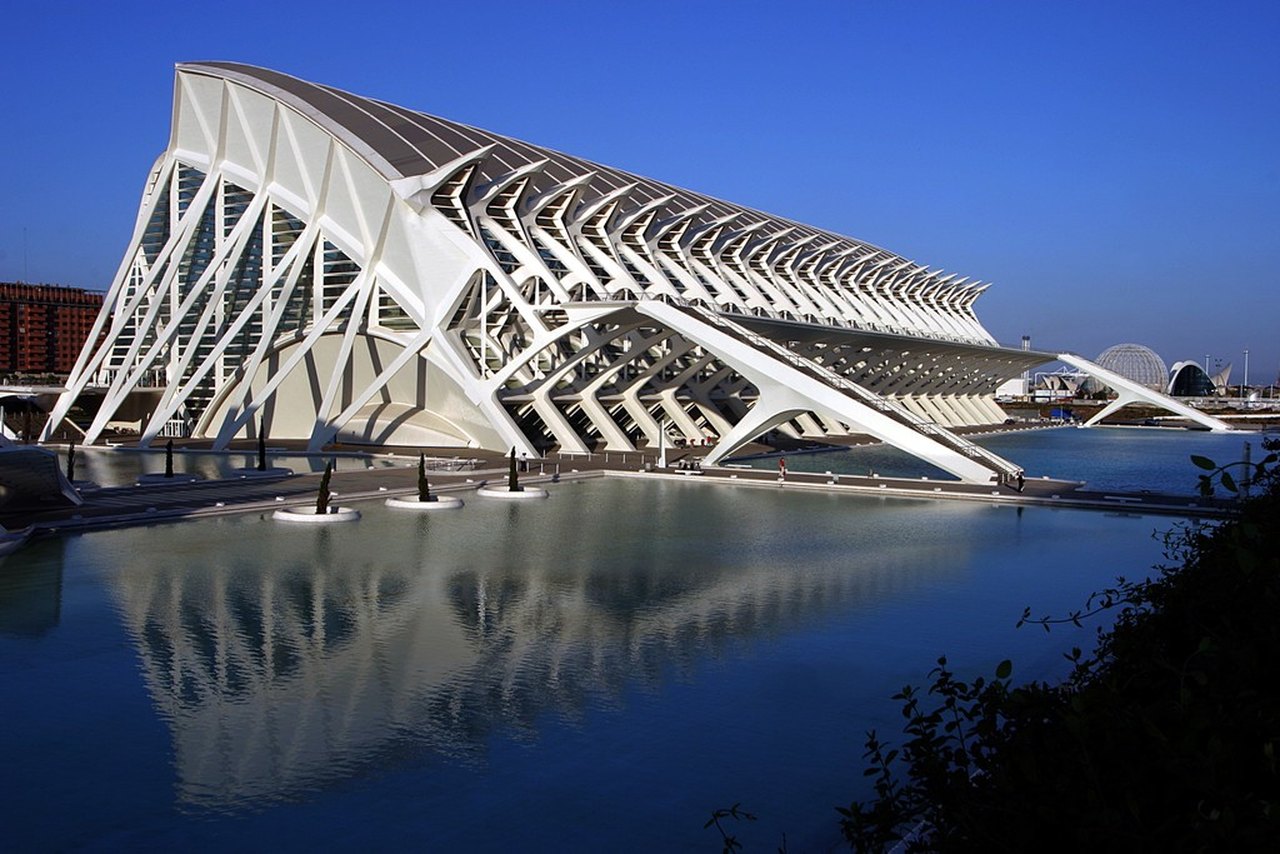Despite being Spain’s third largest city, Valencia has traditionally lagged behind Madrid and Barcelona for visitor appeal. Not anymore. With around 300 days of glorious sunshine, a spectacular blend of traditional and avant-garde architecture, plus fabulous local cuisine and a vast number of direct flights from the UK, Valencia is fast becoming the capital of the weekend break.
Must explore
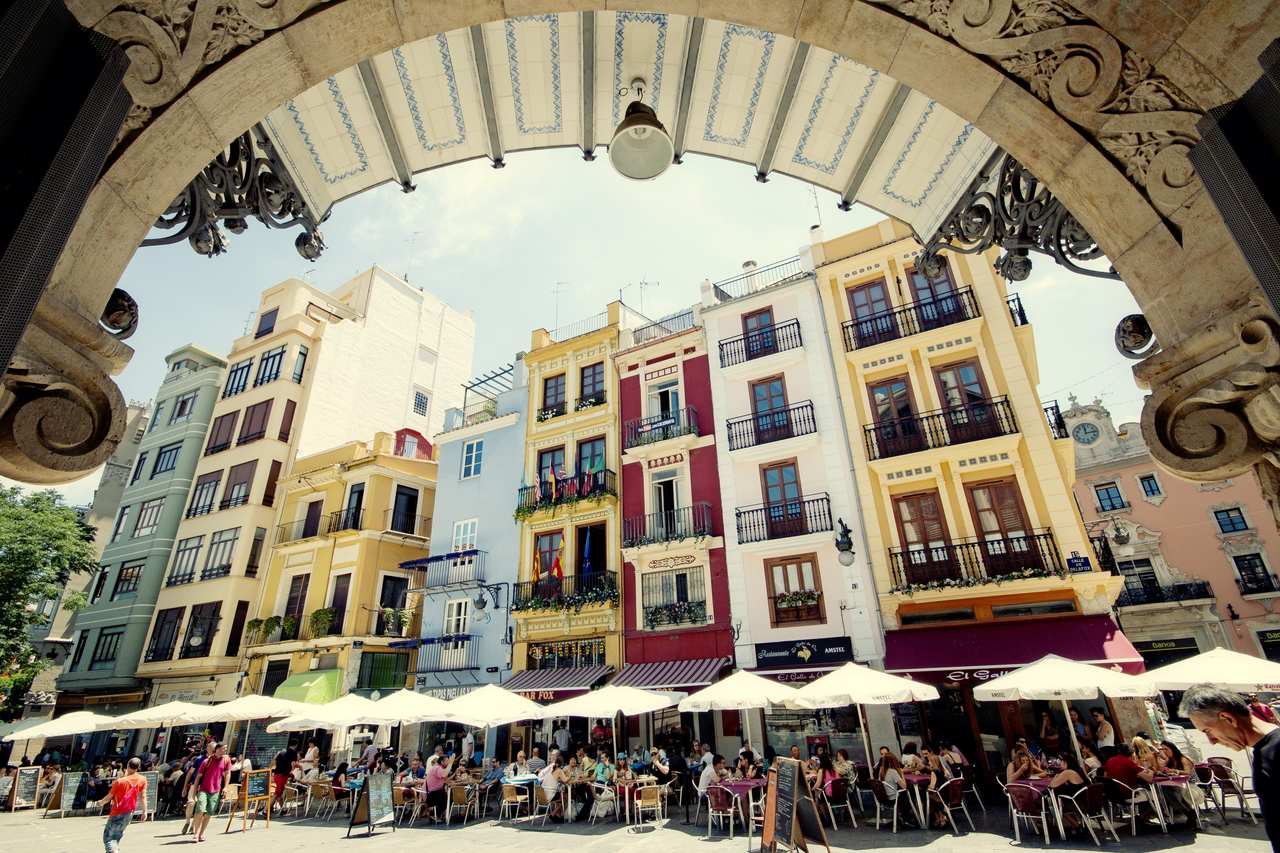
Valencia, shady square
One of the advantages of a trip to Valencia is being able to experience both city and beach. A wander around the streets of the old town, taking in the Gothic churches, grand palaces and shady squares such as Plaza de Virgen is a good place to start.
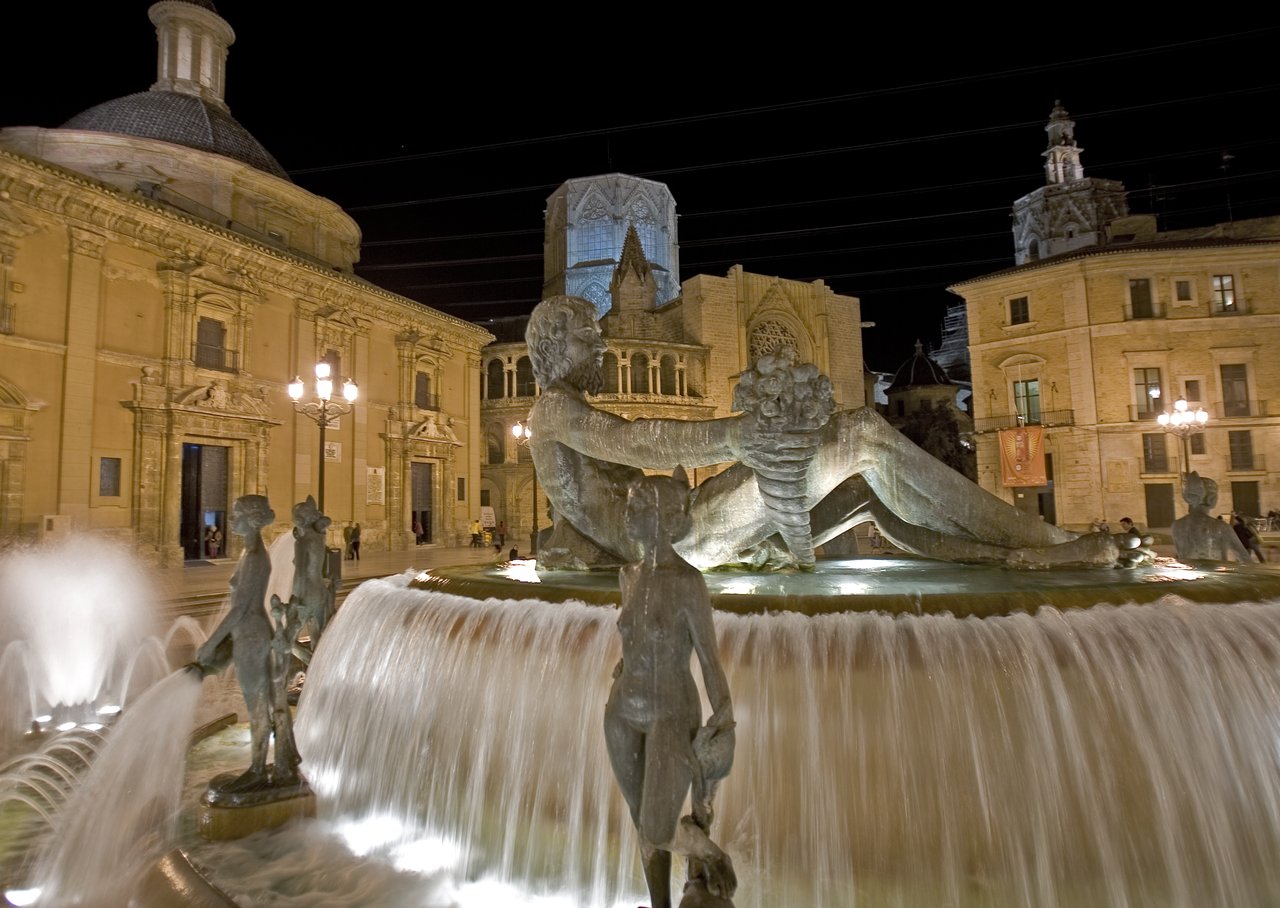
Waterfall at Plaza de la Virgen
Don’t miss the Cathedral, which is home to the Holy Grail (allegedly) and the nearby silk exchange is a UNESCO World Heritage Site.
A quick stroll from the main tourist drag, Ruzafa is Valencia’s hippest barrio (district). It is full of art galleries, café bookshops and designer restaurants and it reveals a different side of the city; especially at night. Also great for night-time drinks and dinner is the neighbourhood of El Carmen. Jazz club, Jimmy Glass (Calle Baja, 28), is a city institution and Radio City (Calle Santa Teresa, 19) has an eclectic offering of films, gigs and exhibitions.
The beach isn’t just for sunworshippers. Las Arenas, La Malvarrosa and Patacona beaches are easily accessible from the city centre and a wander along the sands is the perfect pre-lunch appetiser. The restaurants that line the front are some of the best places to sample paella or the local seafood. Do check they are open out of season and always book for a weekend lunchtime.
Must visit
City of Arts and Sciences is a visually dramatic multi-complex, designed by Santiago Calatrava, comprising an aquarium, digital 3D cinema, science museum, opera house and sculpture garden.
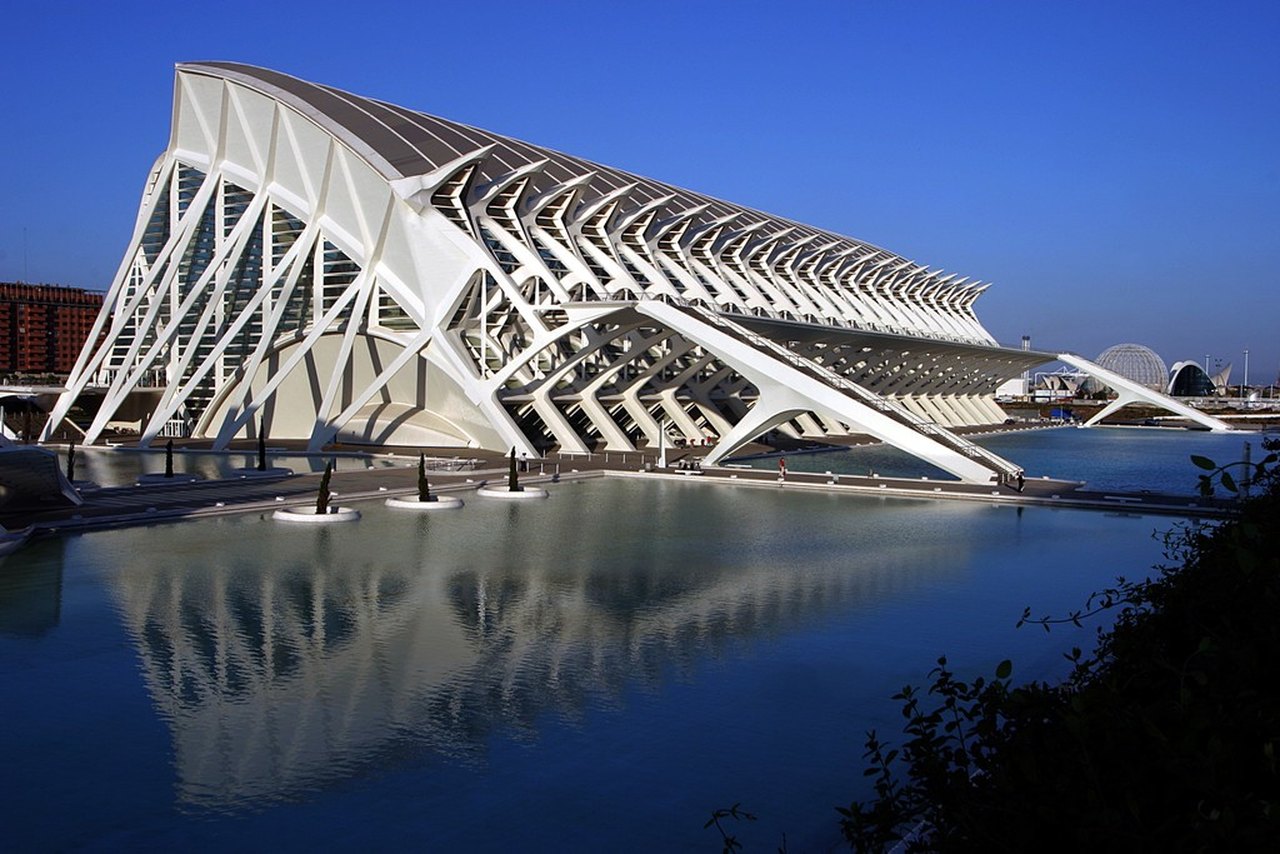
Valencia, City of Arts and Sciences
It covers two kilometres at one end of the Turia Gardens – created on what was the riverbed of the Turia – so once you’ve finished visiting take a walk through the gardens (mind the joggers!) back to the centre of the city.
Not for those with vertigo, arguably the best view of the city is from the lofty perspective of Mirador Ataneo, 50 metres above ground level. On the sixth floor of the same building, the Sky Bar and Restaurant is the ideal spot for a cocktail with your view.
Art lovers should head to IVAM, Valencia’s Museum of Modern Art. The gallery has a strong permanent collection, as well as some high profile temporary exhibitions, such as the Miro retrospective in 2018.
Recommended tours and activities in Valencia
Must eat
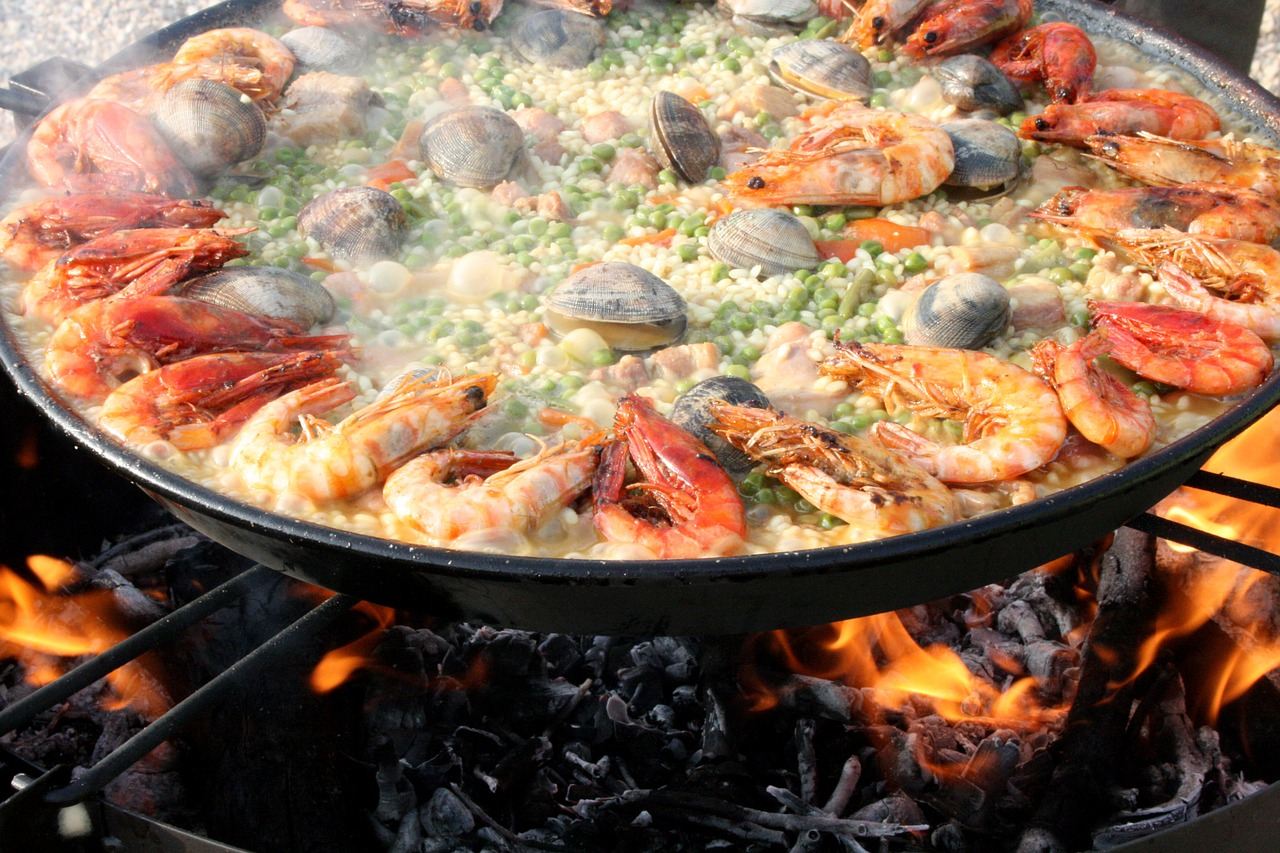
Paella
You can’t go to Valencia and not try the local speciality: paella. (And the Valencianos would say the reverse is true – you shouldn’t eat paella anywhere else!) Paella is served in every other restaurant, so how can you find a good one? Here are our rice rules:
One: If it’s not advertised as being for a minimum of two people, walk on by. You’ll only get a paellera (the pan it’s cooked in) if there’s two of you; otherwise, it will come from a communal pan that’s been lurking on the hob for some time.
Two: Paella must be eaten at lunchtime – ideally Sunday. Ordering it at night is like having “Tourist” stamped on your forehead.
Three: The traditional Paella Valenciana contains chicken, rabbit, snails and both green and butter beans. There are other great varieties, but any that mix seafood and meat (a mixta) are best avoided.
Top tip: the most sought-after bit of the paella is the Socorrat – the caramelised, toasty crust that forms at the bottom of the pan.
Must drink
The local cocktail Agua de Valencia originated in the fifties. The combination of orange juice, cava (or champagne), vodka and a splash of gin, makes it sound lethal, but it’s surprisingly more-ish. Try it at the gorgeously rococo Café de las Horas (Calle Conde de Almodovar, 1).
Balance the alcohol with a horchata. Made of water, sugar and tiger nuts – which confusingly is not a nut, but a tuber – horchata is an acquired taste, but surprisingly refreshing. Try it at a horchateria in the late afternoon with a couple of fartons (local sweet pastries) to fill the gap between lunch and dinner
Must shop
Like any big city, Valencia has plenty to offer the shopaholic – El Corte Ingles department store is a good one-stop shop, while the best Spanish fashions can be found on Calle Colon and Calle Joaquin Sorolla. Look out for brands like Bimba y Lola and Desigual, alongside the behemoths Zara and Mango, which will often stock a different range from the UK. Small shops still close for lunch (between 2 and 5pm), but most of the main stores open through.
Don’t miss an hour browsing the aisles of the Central Market. The fruit and veg stalls have possibly the biggest tomatoes I’ve ever seen and the fish stalls have to be seen to be believed. The nearby art nouveau Colon Market – full of cafes and bars – is a handy pit stop.
Must experience the Fallas Festival
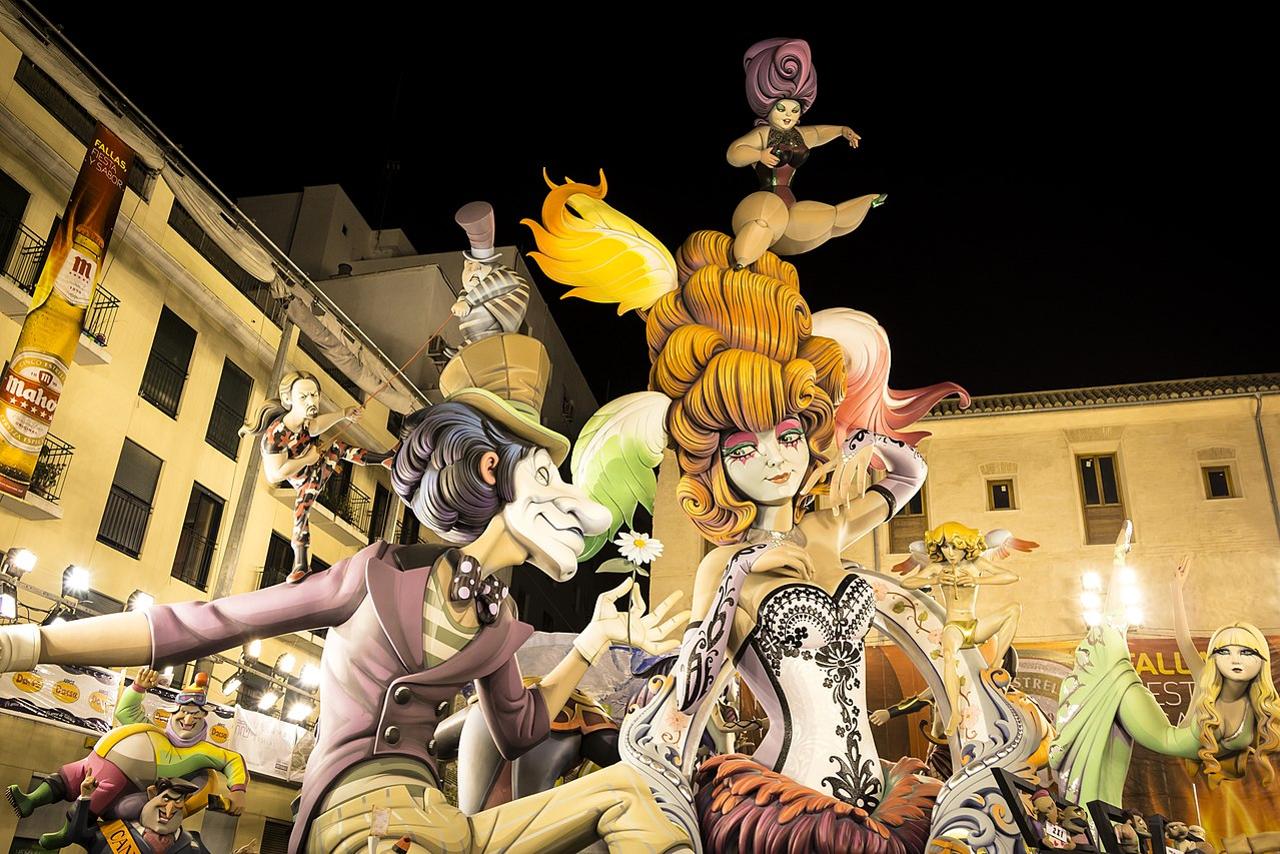
Fallas, Valencia (c) Rafa Esteve
Valencia’s most famous festival is The Fallas and is not for the fainthearted. Taking over the streets from 1-5 September there are fireworks each night at midnight and a display to top all others.
Over 750 colossal puppets – often with a political bent – and ninots (cardboard figurines) are paraded around the city. But, despite the amount of work that goes into them, they all go up in flames on the 5 September.
Where to stay
There is a vast range of accommodation to suit all tastes and budgets, but for a luxury stay, check out Caro Hotel in the heart of the city.
Booking.com
Getting around
The historic centre is compact enough to explore on foot, but you’ll probably want public transport for the beach or to explore further afield. The underground (metro) is clean and efficient and overlaps with the tram network.
Top tip: a 10-journey ticket can be shared by multiple people, meaning each trip costs less than a euro.
With cycle lanes across the city, a bike is a great way to get about. A week’s hire through the city’s official hire scheme, Valenbisi, is 13,30 euros and there are other places offering day and hourly rental.
Be aware that Valencian (very similar to Catalan) is the traditional language and is co-official with Spanish. It is used on all signs and announcements on the metro and street names may appear with their Valencian name, Castilian name or both, which can be confusing.
Getting there
Most of the major airlines fly to Valencia with some great bargains available with Ryanair and Easyjet.
Source : https://www.thetravelmagazine.net/travel-guide-24-hours-in-valencia-spain/

